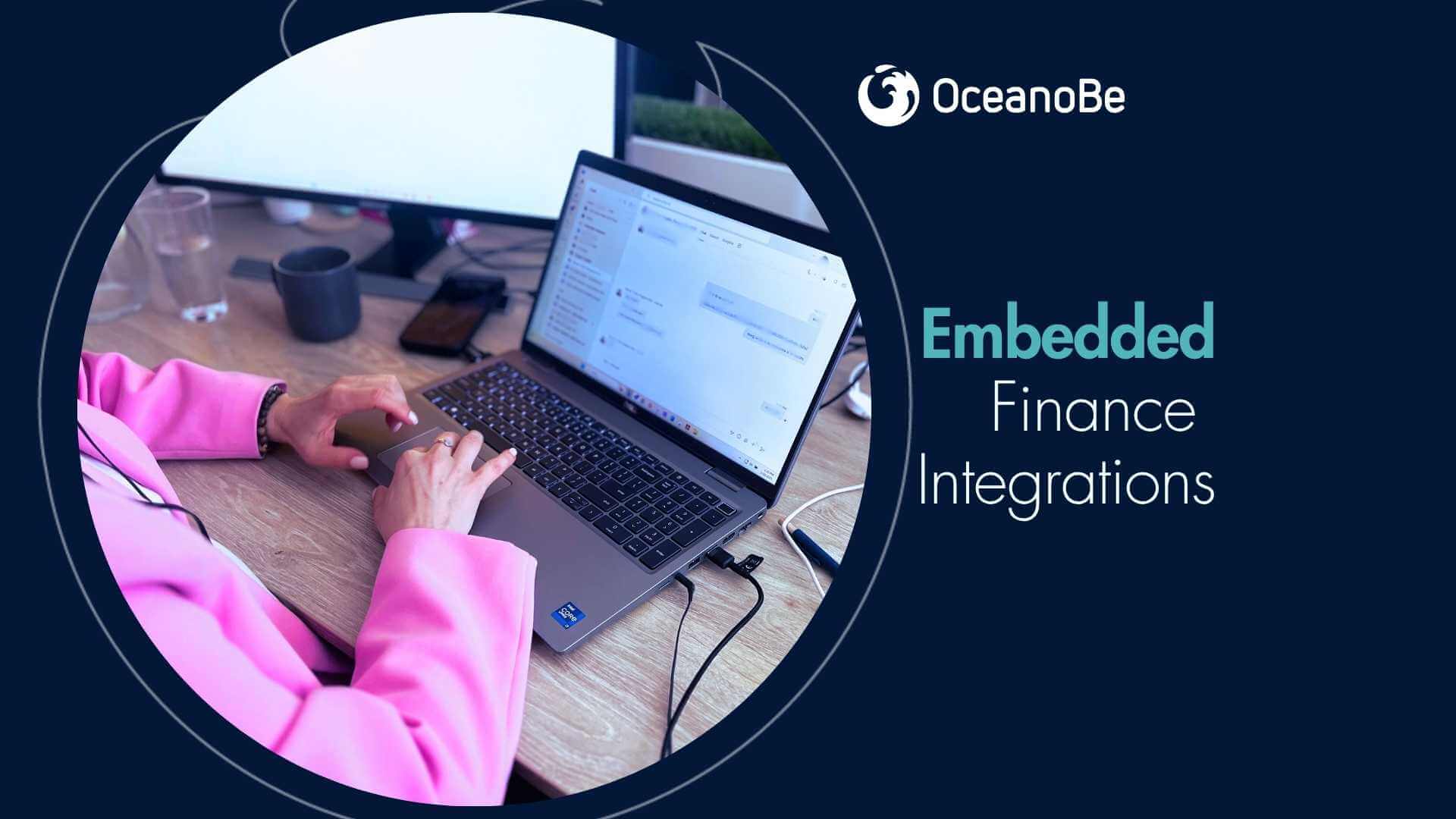Embedded Finance
Integrating Financial Services into Non-Financial Platforms
Integrating Financial Services into Non-Financial Platforms

Embedded finance has become one of the most transformative shifts in the financial services landscape, as traditional banking begins to dissolve into the new everyday digital experiences. What used to be exclusive to banks—offering loans, processing payments, managing insurance, or verifying identities—can now be found embedded within retail platforms, mobility apps, enterprise SaaS products, and even social networks. This isn’t just a trend, but more of a paradigm shift in how financial services are delivered, consumed, and monetized.
At OceanoBe, we’ve worked closely in the banking industry and we’ve implemented innovative ideas in payments or fintech. The opportunity is enormous both for fintech innovators and non-financial brands integrating banking features into their platforms, but so is the complexity behind it. Building seamless, secure, and scalable embedded finance experiences requires more than a few APIs to be stitched together. It demands deep architectural thinking, compliance readiness, and agile engineering.
One of the main reasons embedded finance is gaining traction is its ability to eliminate friction. Consider how ride-sharing apps now offer insurance coverage at checkout or how e-commerce platforms provide point-of-sale financing through Buy Now, Pay Later (BNPL) solutions. These aren’t just convenience upgrades—they’re revenue engines. By keeping users within a single, cohesive experience, platforms increase conversion rates, improve retention, and open up new monetization paths.
From a technical standpoint, this also means abstracting away the complexity of regulated financial infrastructure. End users don’t need to know which bank holds their money or which underwriter approves their insurance. They care about speed, clarity, and trust. Behind that seamless UX sits a robust system of APIs, orchestration layers, identity verification workflows, and integrations with licensed financial entities.
To build embedded finance at scale, platforms must rely on flexible and well-architected APIs. Payment processing, lending, and KYC (Know Your Customer) services are typically integrated via RESTful APIs from third-party providers. These APIs enable rapid deployment but require careful governance and observability to maintain uptime, data privacy, and compliance.
At OceanoBe, we often recommend a microservices approach, where financial components like payments engine, underwriting logic, or compliance workflow operate as isolated, independently deployable units. This not only improves fault tolerance and scalability but also allows teams to iterate faster across different regulatory zones or user segments.
Another layer of complexity is orchestration. Embedded finance often involves multiple steps and systems: user input, third-party API calls, asynchronous verification, and response handling. Implementing reliable orchestration patterns—such as event-driven architecture using Kafka—ensures that each process runs in order, and failure points are gracefully handled.
Security, of course, cannot be an afterthought. Tokenization of financial data, end-to-end encryption, secure authentication, and compliance with PCI DSS and GDPR are critical. A single vulnerability in an embedded financial journey can expose partners to regulatory sanctions and reputational damage.
The use cases for embedded finance are expanding rapidly. In retail, BNPL and embedded payments are driving checkout optimization. In mobility, fleet management apps are adding fuel credit, insurance, and maintenance financing directly within their dashboards. In B2B SaaS, platforms are integrating invoicing, FX, and lending functionalities natively, giving users full control over cash flow without leaving the platform.
Digital marketplaces can implement a lending-as-a-service module within their vendor dashboard. By integrating real-time credit scoring and automated disbursal mechanisms through APIs, they empowered small businesses to get instant working capital—without applying through a bank. The impact was clear: increased vendor satisfaction, faster turnover, and more platform loyalty.
Building embedded finance is not just about speed—it’s about compliance. Every country has different licensing requirements, whether you're dealing with payments, lending, or insurance. Partnering with licensed financial institutions or becoming a Banking-as-a-Service (BaaS) provider’s client is often the first step. However, the responsibilities of data protection, transaction monitoring, and customer transparency remain with the platform.
We emphasize early collaboration between product, legal, and engineering teams to ensure compliance considerations are built into the product lifecycle. Implementing consent management, audit trails, and risk scoring from the outset can save months of regulatory setbacks down the line.
As consumer expectations evolve, the line between financial and non-financial products will continue to blur. Open Banking, digital identity, and real-time payment infrastructure are accelerating this shift. We’re seeing more interest in programmable finance—embedding smart contracts and automated settlement logic into platforms—particularly in cross-border payments and insurance.
For tech teams, the challenge will be balancing innovation with operational rigor. For businesses, the opportunity lies in making finance invisible, intuitive, and indispensable.
At OceanoBe, we bring deep technical and industry knowledge to every embedded finance project we touch. Whether you’re a fintech startup launching a new offering or an enterprise platform adding financial layers, we help you build systems that scale, secure trust, and deliver measurable value.
Want to integrate financial services into your platform? Let’s talk. We’ll help you design, build, and launch embedded finance with confidence.